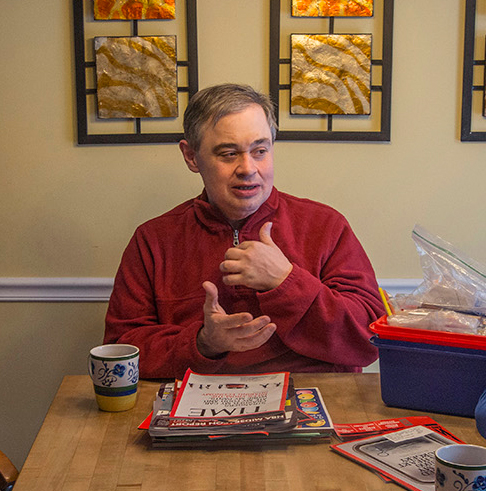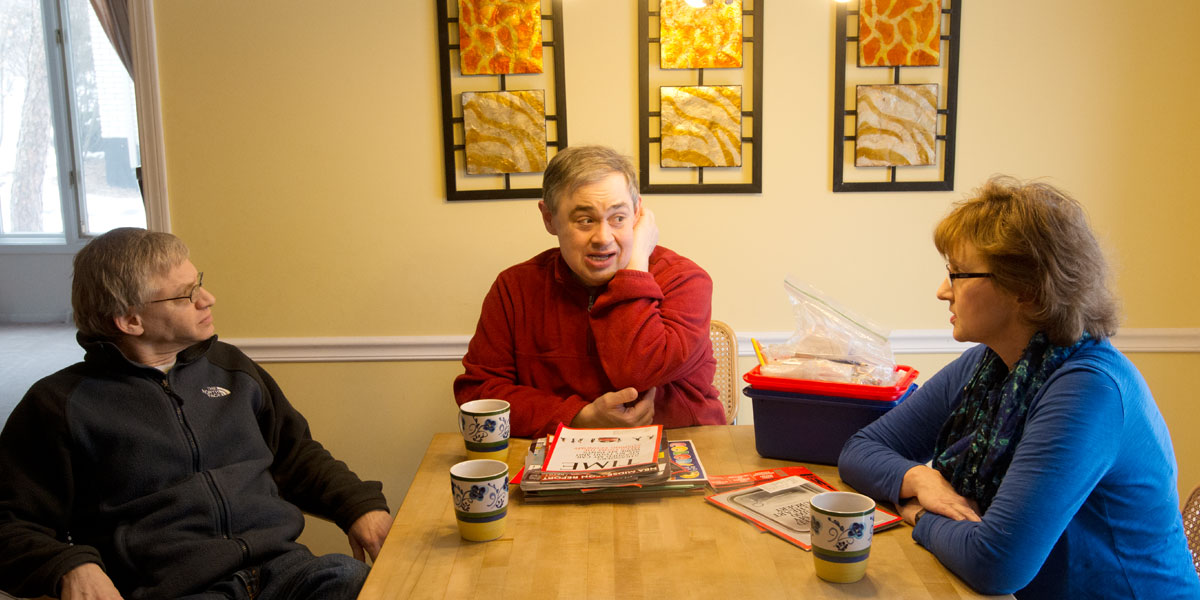That everyday experience transformed the way Pollack thinks about disability and prompted him to write journalistic pieces that have touched the lives of thousands of other people caring for people with disabilities. They have also gained a following among policy makers and helped to influence legislation, such as the Affordable Care Act.

“Vincent’s arrival changed my perspective from third person to first person. I was able to see the social service delivery system from both sides of the counter,” says Harold Pollack, the Helen Ross Professor at SSA and a leading scholar on public health policy.
Pollack has produced an extensive set of academic papers on public health and poverty, as well as disability issues. The emergence of new media outlets, such as blogs, online extensions of traditional publications, and specialized websites powered with the potential to share links via social media, gives him a chance to communicate directly to an audience interested in the needs of individuals who live with intellectual disabilities and the needs of family caregivers. It also enriched his scholarship and provided him material for an upcoming book on the history of treatment of people with intellectual and developmental disabilities (IDD) in the United States.
In pieces for The Washington Post, The New York Times, healthinsurance.org, Huffington Post, The New Republic, and others, Pollack has written about family caregiving, and has challenged people to think about ways society can respond better to the needs of people with IDD. His work is part of a national conversation about disability and continues in his Twitter feed, which now has more than 7,000 followers.
“Harold has been a unique and invaluable driver of what I’d call ideas journalism,” says Atul Gawande, a surgeon and public health professor at Harvard who is also a staff writer for The New Yorker.
“He is demonstrating that academics can have an important place in using blogs and print outlets to provide analysis in a timely way for critical debates. And he is going further by covering the development of ideas themselves as a journalist—whether through interviews with other thinkers or reporting on how their ideas are or aren’t entering the policy sphere. Harold has been an incredibly effective catalyst for ideas in health care and social policy.”
Pollack writes about his brother-in-law’s experiences—and the very different experiences of others—in an effort to put a human face on complex policy challenges. That example helps explain how complex bureaucracies affect the lives of persons with disabilities. “The prism of one individual helps to illuminate for lay readers insights about policy that otherwise would be less engaging or understandable,” says Greg Anrig, vice president of policy and programs at The Century Foundation, a public policy research organization where Pollack has been a non-resident fellow since 2010.
Pollack’s work is part of a long tradition of senior UChicago scholars contributing to popular publications, either through opinion pieces or regular columns. The emergence of new media outlets has changed the pace, however, and given scholars more control over the length and content of what they write. Editors are no longer exclusive guardians of of entry to publication. “This creates its own challenges and responsibilities. The only thing standing between you and your audience is the send key,” Pollack says.
Perrone, who is now 49, came to live with Pollack, his wife, and their two young daughters after Pollack’s mother-in-law died in 2004. Although encouraged to put him in an institution, Janice Perrone and her husband Gregory (who died in 1999) instead decided to keep him at home.
Pollack and his wife, Veronica, “silently feared the eventual responsibility for Vincent’s care. How would he deal with our two young daughters, and they with him? We feared the financial and logistical ramifications of bringing him into our home. Janice refused to discuss his future with us,” Veronica and Harold wrote in a widely read Health Affairs article, “Bringing Vincent Home.”
“We quickly found that many of our fears proved worse in prospect than in the reality of Vincent’s care. We’d underestimated Vincent in many ways. He has an I.Q. in the mid-fifties and struggles to communicate verbally. Yet he understands everything we say. He has an uncanny memory for things meaningful to him: television characters, our friends, and the household schedule,” the Pollacks wrote of Perrone, who has fragile X syndrome.
Despite the ease with which Perrone was able to become part of the family, he faced many health-related issues, which have required multiple hospitalizations and a variety of other forms of medical care. As they worked to help Vincent adjust and stay healthy, the couple learned about social services available, how to maneuver through the Medicaid bureaucracy, and how to advocate for him. The experience was often baffling, even to the two well-educated professionals.
The bulk of that work fell on Veronica Pollack, who was trained as a pediatric clinical nurse specialist. “I’m not sure I could ever communicate just how much Veronica has done to help Vincent, over so many years now,” Pollack says. “I can tell my readers about some particular overnight hospital stay or some other challenge. Unless someone has experienced something similar, it’s almost impossible to convey the sheer relentlessness of the task. I try to convey some of that to our students, who meet other families who face analogous challenges—families that lack the resources Veronica and I can bring to bear in caring for Vincent.”
Caring for an individual living with fragile X syndrome poses many challenges. Fragile X is a genetic condition associated with a range of developmental problems, including cognitive disability and various other symptoms, including some associated with autism. Vincent has a sweet disposition, but like many men with fragile X syndrome, he requires help with nutritional self-regulation.
“Food provided his main gratification. Whenever he was hungry, he would go to the refrigerator, fix a bulging peanut butter sandwich, and drink it with a brimming glass of Pepsi. Five feet eight and one-half inches tall, Vincent weighed perhaps 340 pounds at the time of Janice’s death,” the Pollacks wrote. They don’t really know, since that was the top weight recorded on their bathroom scale.
“Laundry and housekeeping were constant challenges. He didn’t sleep well. At night he would blare his TV, scavenge in the kitchen, and tear up books and old photos. Having limited tools to negotiate conflict, Vincent would bite his palms when he was angry or frustrated. He sometimes hit or pinched Janice, leaving small bruises.” Due in large part to the limited ability to communicate, surveys indicate that one-third of family caregivers of men with fragile X syndrome have been injured by the person they care for.
Vincent has had multiple hospitalizations and has other important medical needs. At one point, he needed four weeks of round-the-clock home IV care. “We spent ten hours in the emergency department after he pried off a child lock and ate a box of chocolate-flavored vitamin chews,” the Pollacks wrote.
Vincent accepted, with some grumbling, drastic life changes. His room has no TV. He ate a portion-controlled diet. “By fall 2004 a handsome, slimmer man emerged” At his slimmest, Vincent weighed 175 pounds. He has regained some of the weight. He remains far healthier and slimmer than he was when he walked into the Pollack home.
Perrone stayed in the family’s home for almost three years, before he moved to a nearby group home.




